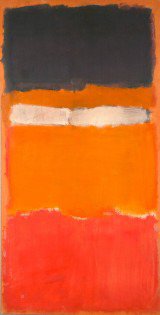The Century Mark
dal 26/3/2015 al 20/6/2015
Segnalato da
Alexander Archipenko
Avigdor Arikha
Arie Aroch
Yael Bartana
Max Beckmann
Guy Ben Ner
Marc Chagall
Zoya Cherkassky
Jean Baptiste Camille Corot
Edgar Degas
Marcel van Eeden
James Ensor
Max Ernst
Nir Evron
Alberto Giacometti
Arshile Gorky
Juan Gris
Raafat Hattab
Abraham Tzion Hazan
Erich Heckel
Michal Helfman
Eva Hesse
Hans Hofmann
Marcel Janco
Alexej von Jawlensky
Wassily Kandinsky
Henri Laurens
Max Liebermann
El Lissitzky
André Masson
Ludwig Meidner
Claude Monet
Giorgio Morandi
Edvard Munch
Felix Nussbaum
Max Pechstein
Nira Pereg
Pablo Picasso
Jackson Pollock
Dante Gabriel Rossetti
Mark Rothko
Reuven Rubin
Issachar Ryback
Salome (Wolfgang Ludwig Cihlarz)
Egon Schiele
Karl Schmidt Rottluff
Georges Seurat
Paul Signac
Chaim Soutine
Jakob Steinhardt
John Stezaker
Yves Tanguy
Lesser Ury
Maurice de Vlaminck
Nevet Yitzhak
Tamir Zado
26/3/2015
The Century Mark
Martin Gropius Bau, Berlin
On the occasion of the 50th anniversary of establishment of German-Israeli relations, the Tel Aviv Museum of Art is sending some 70 masterpieces to Europe. The show reflects all of the important 20th century movements in figurative and abstract art. At the same time, it takes account of contemporary tendencies in video and installation art.

On the occasion of the 50th anniversary of establishment of German-Israeli relations, the Tel Aviv Museum of Art is sending some 70 masterpieces to Europe for the first time – to Berlin. The accent of the exhibition lies on the art of the modern era and is supplemented by contemporary media art from Israel. Artistic trends of the 20th century are represented by paintings, sculpture and graphic art. Works by Alexander Archipenko, Max Beckmann, Marc Chagall, Edgar Degas, Erich Heckel, Alberto Giacometti, Wassily Kandinsky, Jackson Pollock, Ludwig Meidner, Pablo Picasso, Mark Rothko, Egon Schiele and Lesser Ury will be displayed. Video works and installations by Israeli artists will form a counterpoint to these modern classical masters.
In its entirety the show reflects all of the important 20th century movements in figurative and abstract art. At the same time, it takes account of contemporary tendencies in video and installation art, including positions taken by such artists as Yael Bartana, Guy Ben-Ner, Nevet Yitzhak, Nira Pereg and Michal Helfman, who deal with personal, social and political subject matter. The dialogue between classical modernity and contemporary Israeli art extends throughout all of the rooms and is part of the curatorial concept. Curators of the exhibition are Suzanne Landau, Ellen Ginton, Irith Hadar and Raz Samira.
The artists in the exhibition are:
Alexander Archipenko; Avigdor Arikha; Arie Aroch; Yael Bartana; Max Beckmann; Guy Ben-Ner; Marc Chagall; Zoya Cherkassky; Jean-Baptiste Camille Corot; Edgar Degas; Marcel van Eeden; James Ensor; Max Ernst; Nir Evron; Alberto Giacometti; Arshile Gorky; Juan Gris; Raafat Hattab; Abraham Tzion Hazan; Erich Heckel; Michal Helfman; Eva Hesse; Hans Hofmann; Marcel Janco; Alexej von Jawlensky; Wassily Kandinsky; Henri Laurens; Max Liebermann; El Lissitzky; André Masson; Ludwig Meidner; Claude Monet; Giorgio Morandi; Edvard Munch; Felix Nussbaum; Max Pechstein; Nira Pereg; Pablo Picasso; Jackson Pollock; Dante Gabriel Rossetti; Mark Rothko; Reuven Rubin; Issachar Ryback; Salomé (Wolfgang Ludwig Cihlarz); Egon Schiele; Karl Schmidt-Rottluff; Georges Seurat; Paul Signac; Chaim Soutine; Jakob Steinhardt; John Stezaker; Yves Tanguy; Lesser Ury; Maurice de Vlaminck; Nevet Yitzhak; Tamir Zadok
A catalogue published by Prestel Verlag accompanies the exhibition. The Centrum Judaicum Berlin will participate in the production of the German-language edition.
About the Museum
The Tel Aviv Museum of Art was founded in 1932 by the then Mayor of Tel Aviv, Meir Dizengoff, in his private home on Rothschild Boulevard. The founding director was the Berlin art historian, Karl Schwarz. He headed the Tel Aviv Museum of Art from 1933 to 1947 and visited artists and important collectors in order to appeal to them for artworks for the new museum. Today the collection includes works from all important artistic styles of the 20th century, beginning with Impressionism and ranging from Expressionism on up to various forms of geometric abstraction and Surrealism; representatives of European Informalism are found side by side with those of American Abstract Expressionism and Pop Art. They include early works by the Russian avant-garde artist Alexander Archipenko from the time between 1908 and 1921; paintings by Marc Chagall; masterpieces by Wassily Kandinsky; works of Pablo Picasso from different periods; outstanding works by Mark Rotho and Jackson Pollock; and numerous works by Israeli artists. A major part of the collections came from donations by artists, patrons and benefactors. The corpus of artworks continues to be augmented by committed collectors and friends from around the world.
Today the Tel Aviv Museum of Art comprises three buildings and shows up to 30 exhibitions each year. The curatorial departments include Israeli art, modern and contemporary art, graphics and drawings, photography, architecture and design as well as Old Masters.
On the occasion
The exhibition of the Tel Aviv Museum of Art to be presented in the Martin-Gropius-Bau is an important part of the programme on the occasion of the 50th anniversary of diplomatic relations between Israel and the Federal Republic of Germany. These relations came into effect on 12 May 1965.
The exhibition “Tel Aviv Museum of Art visits Berlin” has been made possible by the generous support of the Israeli Ministry of Foreign Affairs, Department of Science and Culture, and by the kind support of the Federal Government Commissioner for Culture and the Media
Image: Mark Rothko: No. 24 (Untitled), 1951. Gift of The Mark Rothko Foundation, Inc., New York, through the American Friends of the Tel Aviv Museum of Art, 1986
Press Contact: Dr. Susanne Rockweiler, presse@gropiusbau.de
Opening: Friday 27 March 2015
Martin-Gropius-Bau
Niederkirchnerstraße 7
10963 Berlin
Opening hours
Wednesday to Monday 10:00–19:00
Tuesday closed
Single tickets € 10 / reduced € 7



